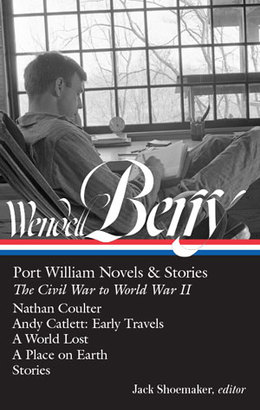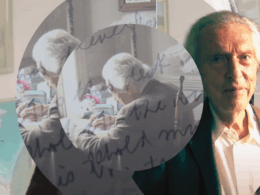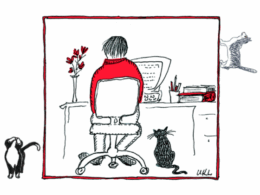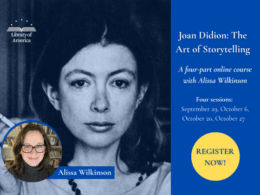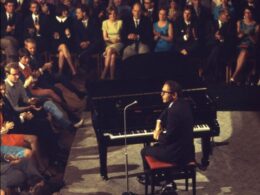In the course of collaborating with Wendell Berry on the chronology for our new collection of his fiction, Port William Novels & Stories (The Civil War to World War II), we persuaded him to elaborate on an initial set of notes regarding his fellow writers and teachers through the years. The results appear below, as a Library of America web exclusive.
Hayden Carruth. I first encountered his work in May of 1964. He first wrote to me in response to my poem “Meditation in the Spring Rain,” I remember. But I don’t remember the year. After that we visited back and forth several times and carried on a lively and (to me) very valuable correspondence as long as he lived. I love him and his work very much.
Harry Caudill. In 1963, when I was living in New York and knew I would return home, Harry published Night Comes to the Cumberlands. I read it in the summer of that year. It showed me what it might mean to be a responsible Kentucky writer living in Kentucky, and it affected me deeply. Gurney Norman introduced me to Harry and Anne Caudill when I visited him in the summer of 1965. Harry (until his death) and Anne, Tanya and I became close friends and did a good deal of visiting and talking. Harry opposed the coal industry in coal country, pretty much face to face. He was, and he remains, a landmark.
Ross Feld. I got acquainted with Ross by way of Jack Shoemaker and North Point, maybe when he reviewed—A Part, was it?—for Kirkus. I don’t remember when we became friends and began writing to each other. We did some visiting after he moved to Cincinnati. Ross had a fine, generous mind. I delighted in his company, and I still love and miss him.
Ernest J. Gaines. He too came to Stanford as a Stegner Fellow in 1958. We began to know each other then, and I’ve had him much in mind ever since. His loyalty to his country in Louisiana, his return to live there, his excellence as a writer, and his understanding of the agrarianism of his people (see “Rufe” in A Gathering of Old Men), all have been inestimably valuable to me. We have been friends, but have written few letters. He visited us here in 1980. We visited him and Dianne in Louisiana in 2007.
John Haines. I first met him and began reading his work when he gave a reading at Stanford in either the fall quarter of 1968 or the spring quarter of 1969. Our friendship began with correspondence in 1985, and we were in touch until his death. He visited us here several times. I value highly both him and his work.
Donald Hall. I met him in 1963. We both remembered that meeting, but we became friends and correspondents only when he wrote to me at the time of his move home to his mother’s family’s farm in New Hampshire. We’ve written a lot of letters, and for a long time showed each other our new poems. His help to me, especially with my early Sabbath poems, was just immensely useful. A beloved and necessary friend.
James Baker Hall. My first literary friend. We met and started talking in, I think, 1954. This was an indispensable conversation.
Harlan Hubbard. We met by chance in 1964. He and Anna, Tanya and I became friends after our establishment here in 1965. Though Harlan would not have agreed, probably no couple with children could have followed very exactly his and Anna’s example, but their example has always been an inspiration and a steadying influence. We loved (and love) them, and we love Harlan’s paintings and books.
Ken Kesey. We were together in the Stanford seminar in 1958–59 and a good many times from then until his death. Our ways of living and working were very different, but I owe him for friendship, much kindness, much laughter, and a number of insights that have been confirming and necessary to my own life and work. It matters that he was another writer who went home.
Denise Levertov. With characteristic generosity she wrote me a letter in 1958 about a poem I had published in Poetry. There was some correspondence from then until we met in New York in the fall of 1962. We lived as friends and neighbors in New York City. I have great respect for her work, and a big debt to her.
Ed McClanahan. We met in a graduate course at the University of Kentucky in the spring of 1957. Our conversation began then and is still going. I suspect I have written a good many sentences that I learned to write from him.
Bobbie Ann Mason. This is another of my longest friendships. We have several influences in common. Her work, her kindness, and her presence here in Kentucky I have depended on as dear and confirming pleasures.
Gurney Norman. I met him in 1956. Our paths crossed a number of times in the next eight or nine years. But our conversation, and my debt to him, really began when I visited him in Hazard in the summer of 1965. We still keep close, mainly by writing letters. Gurney has been my Virgil in the upper end (the mountain end) of the Kentucky River watershed, where he is at home. I’m at home on the lower end.
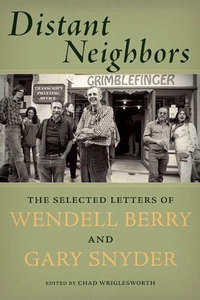
Gary Snyder. We first met when he visited us here in 1973, and during the forty-four years since then he has been present to my mind and thoughts. Our correspondence, published as Distant Neighbors, is evidence of an enlivening and useful friendship. The “distance” is that between the Sierra foothills near Nevada City and the Kentucky River “footwater” (as Gurney calls it) near Port Royal, between his committed, informing, and scholarly Buddhism and my somewhat struggling adherence to the Gospels. And so on. That distance is descriptive certainly of his usefulness to me, and perhaps of our usefulness to each other. He, far more than any other contemporary poet known to me, has kept steadfastly mindful of the ecological and economic details of dwelling in place. And so I have felt my work to be supported and complemented by his.
Wallace Stegner. I met him of course when I went to Stanford in 1958. He taught the writing seminar in (as I remember) the spring of 1959. He was an excellent, practical critic and teacher, and I have remained under that influence. After I returned to my own country to live, I began to be very much affected and influenced by his responsibility, as writer and advocate, to his country. My debt to him is probably greater than I know.
James Still. I met him in 1954, and never forgot the advice and encouragement he gave me then. His short stories, I think, are as near to perfect as any writing I know. He was (and is) very dear to me as a writer and a friend.
Thomas Stroup. Though he was not a “writing teacher,” his literature courses required a lot of writing, including term papers, and he graded them strictly. He may never have accepted anything I wrote as first submitted. He was the first teacher to whom I showed my efforts at poetry, which mostly were very bad. He treated me patiently and kindly, and could be demanding and encouraging at the same time. I took his Milton course and three or four others. He was the best teacher I had in school. I honor his memory and remember him with love.
Hollis Summers and Robert Hazel taught writing courses at the University of Kentucky. Though I can’t count them as literary influences, I earned a lot from them, was helped and encouraged by them, and am much indebted to them. Both were generous men, Robert Hazel especially so, for he welcomed us into conversation at his house about any time we wanted to go there.
I should add that I have held in friendship and owe much to several editors and copyeditors who have contributed substantially to my education.
